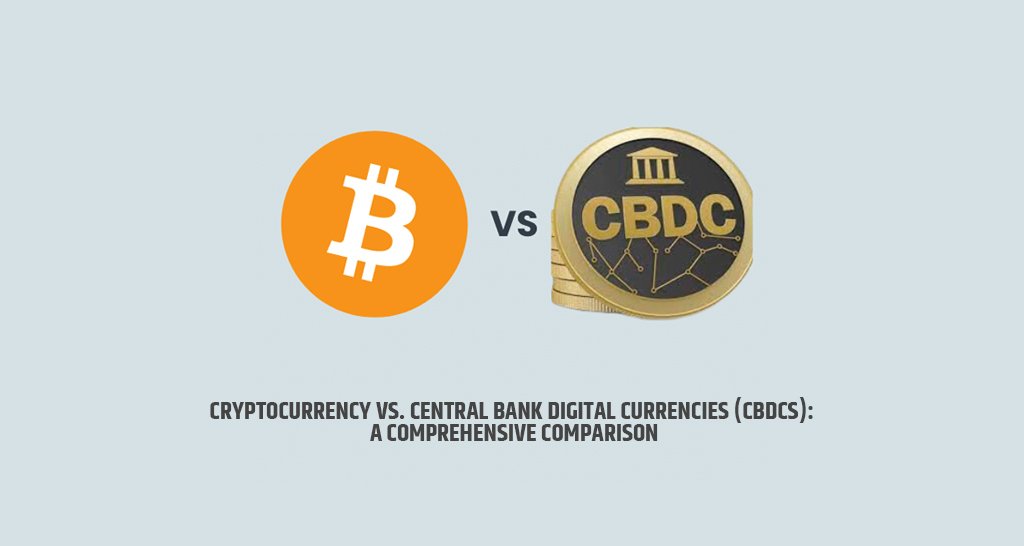Introduction to Cryptocurrencies and CBDCs
Cryptocurrencies are digital or virtual currencies that utilize cryptography for security, making them difficult to counterfeit. They operate on a technology known as blockchain, which is a decentralized ledger that records all transactions across a network of computers. This decentralized nature distinguishes cryptocurrencies from traditional currencies, allowing them to function without the oversight of central authorities. Among the most notable examples of cryptocurrencies are Bitcoin, which was introduced in 2009, and Ethereum, which enabled the development of smart contracts. Their design enables peer-to-peer interactions, providing users with enhanced control over their funds and transactions.
Bitcoin remains the cornerstone of the cryptocurrency movement, offering a decentralized alternative to the fiat currencies issued by governments. With its limited supply, Bitcoin appeals to those looking for a hedge against inflation. Ethereum, on the other hand, brought forth smart contracts and decentralized applications, expanding the functionalities of blockchain technology. The rise of thousands of altcoins has also contributed to an increasingly diverse landscape, where each digital asset aims to fulfill different market needs.
In contrast, Central Bank Digital Currencies (CBDCs) represent a new frontier in the realm of digital money, characterized primarily by government endorsement and central bank control. Unlike cryptocurrencies, which prioritize decentralization, CBDCs are government-issued digital currencies designed to work alongside traditional currencies. The primary aim of CBDCs is to enhance the efficiency of payment systems, reduce transaction costs, and provide a stable digital alternative to cash. With the increasing digitization of economies worldwide, central banks are exploring the potential of CBDCs to not only modernize monetary policy tools but also to ensure financial inclusion. Various countries are already in the stages of research, development, and pilot programs to understand better the implications of introducing a CBDC.
Key Differences Between Cryptocurrencies and CBDCs
The primary distinction between cryptocurrencies and central bank digital currencies (CBDCs) lies in their structure and governance. Cryptocurrencies, such as Bitcoin and Ethereum, operate on decentralized networks, often using blockchain technology. This decentralization allows users to transact without the need for intermediaries, fostering a sense of financial autonomy. Conversely, CBDCs are issued and regulated by central banks, reflecting a centralized approach to currency management. This creates a more controlled environment where the central authority can monitor and influence monetary policy and economic stability.
Another significant difference is the level of privacy offered by each digital currency. Cryptocurrencies typically provide varying degrees of anonymity, allowing users to transact without revealing their identities. This privacy feature can make them appealing for individuals seeking confidentiality in their financial dealings. However, with the increasing scrutiny of regulatory bodies, the perception of cryptocurrencies as anonymous systems is evolving. In contrast, CBDCs are designed with compliance in mind, enabling central banks to track transactions, which enhances regulatory oversight and reduces illicit activities such as money laundering.
Volatility is another key factor. Cryptocurrencies are known for their price fluctuations, which can be attributed to market speculation, supply and demand dynamics, and changes in investor sentiment. This volatility can deter their use as a stable medium of exchange, limiting their effectiveness for everyday transactions. On the other hand, CBDCs are pegged to the value of fiat currencies, allowing them to maintain a stable value. This stability is a critical feature that enhances their potential role in the existing financial ecosystem.
Lastly, the intended use cases for cryptocurrencies and CBDCs vary significantly. Cryptocurrencies are often viewed as investment vehicles or alternatives to traditional currencies, appealing to those interested in decentralized finance. In contrast, CBDCs aim to enhance the current financial system by providing a secure, efficient, and accessible means of payment while ensuring economic compliance. Thus, while both forms of digital currency are significant innovations, their applications and implications differ fundamentally.
Impacts on the Financial System and Economy
The emergence of cryptocurrencies has significantly altered the dynamics of the financial landscape, raising questions about their potential to disrupt traditional banking systems. Unlike conventional currencies regulated by central authorities, cryptocurrencies operate on decentralized platforms. This decentralization allows for peer-to-peer transactions that can bypass banks entirely. While this can lead to lower transaction costs and increased accessibility for users, it poses challenges to the existing financial architecture. Traditional banks may face decreased relevance as individuals opt for cryptocurrencies for everyday transactions, savings, and investments.
Furthermore, the introduction of cryptocurrencies presents implications for monetary policy. Central banks typically utilize interest rates to manage economic stability; however, widespread adoption of unregulated digital currencies could undermine such mechanisms. The unpredictability of these currencies makes it difficult for policymakers to forecast economic conditions, complicating monetary interventions and potentially leading to heightened volatility within the financial system.
On the other hand, Central Bank Digital Currencies (CBDCs) offer a contrasting approach that can reinforce government oversight in financial transactions. By implementing a digital currency that is backed and regulated by a central authority, CBDCs could improve transaction efficiency and reduce costs associated with cash handling. Such initiatives could also help mitigate illicit activities commonly associated with cryptocurrencies, as CBDCs can incorporate strict compliance measures and traceability features.
Real-world examples such as China’s digital yuan highlight how CBDCs can be leveraged to reshape payment systems and enhance governmental control over economic activities. As nations approach the integration of digital currencies differently, the impacts on the economy and the financial framework will vary. Future scenarios indicate that the interplay between cryptocurrencies and CBDCs will likely define the next stage of economic evolution, necessitating thoughtful consideration by regulators and stakeholders alike.
Future Outlook: Coexistence or Competition?
The future relationship between cryptocurrencies and Central Bank Digital Currencies (CBDCs) is increasingly becoming a topic of discussion among financial experts, policymakers, and consumers alike. As both digital currencies continue to evolve, various scenarios suggest they may either coexist harmoniously or engage in fierce competition. Coexistence could lead to a diversified financial ecosystem where innovation thrives, financial inclusion improves, and consumers benefit from a range of options for making transactions. In this landscape, cryptocurrencies could serve as alternative currencies, mainly utilized for speculative purposes, while CBDCs, backed by governments, could offer a stable and secure method of transaction that integrates seamlessly with existing banking infrastructures.
On the other hand, the potential for conflict is evident as governments strive to establish regulatory frameworks for the booming cryptocurrency market. With concerns surrounding illicit activities, market volatility, and consumer protection, many central banks may feel compelled to restrict or even ban cryptocurrencies. In such a scenario, traditional financial institutions may face pressure to adopt a more cautious approach toward digital currencies, which could stifle innovation. However, it is essential to recognize that the regulatory landscape is not static; as technology advances, so too will the understanding of the benefits and risks associated with these digital assets. Regulators may find ways to integrate both cryptocurrencies and CBDCs into the financial system, promoting a balanced approach that encourages entrepreneurship while safeguarding consumer interests.
Technological advancements play a significant role in shaping the landscape in which cryptocurrencies and CBDCs will operate. Innovations such as decentralized finance (DeFi) and blockchain interoperability may pave the way for new solutions that meld the strengths of both types of digital currencies. Additionally, shifting consumer preferences will impact how these currencies are perceived and adopted, further complicating the future relationship between cryptocurrencies and CBDCs. With various factors at play, the coming years will undoubtedly be pivotal in determining how these digital currencies shape the future of finance.



